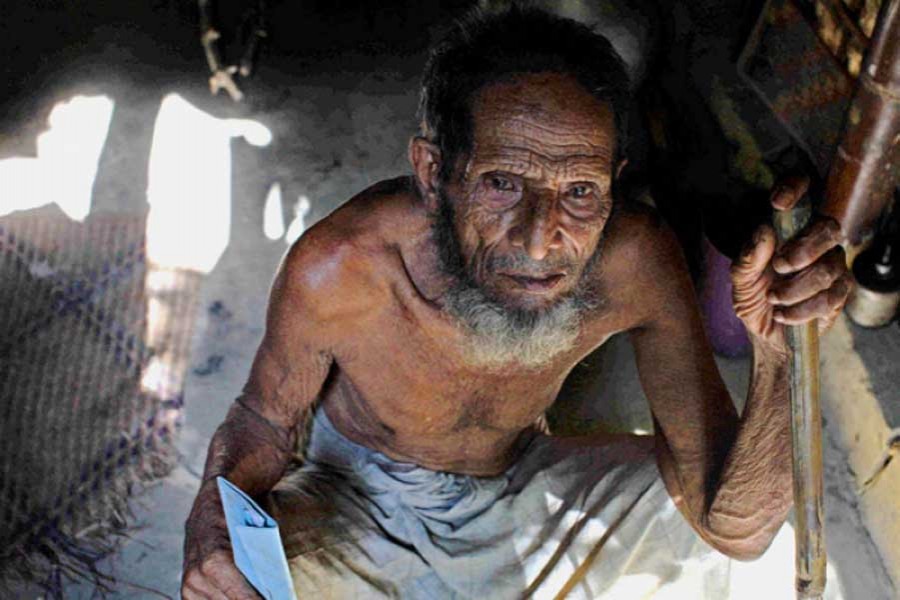Poverty reduction initiatives of Bangladesh contributed to fulfilling all three eligibility criteria for graduation from the UN's Least Developed Countries (LDC) list. In spite of achieving significant progress in poverty reduction, 41 per cent and 16 per cent of the population were marked as 'poor' and 'severe poor' respectively by UNDP Multi-Dimensional Poverty Index 2018.
The impact of extreme poverty on children's development remains significant -- with the prevalence of malnutrition among young children in developing countries being approximately 2.5 times higher in the poorest families compared with the richest. This impact is further compounded by the predictions that climate and disaster risk impacts will push an estimated 325 million poor people further into extreme poverty in some of the poorest countries over the next decade (World Vision International, 2019).
Effective initiatives for poverty reduction must be continued in Bangladesh to reduce the number of poor people as well as prevent the vulnerable people from falling back into poverty and thus facilitate the country's expected graduation process by 2024.
One of the successful models for poverty reduction is Ultra Poor Graduation (UPG) Model. This model aims to "graduate the most vulnerable families out of extreme poverty, targeting vulnerable, economically excluded and chronically food insecure/malnourished families and providing temporary food and cash (safety net) assistance, promoting regular savings, technical and social skills development and providing productive assets with the aim of graduating them out of extreme poverty and into self-reliance".
This model addresses the multidimensional causes of ultra-poverty, food insecurity/malnutrition, poor health, social stigma, limited transferable skills and lack of access to assets or savings. The graduation approach is based on the premise that ultra-poverty or extreme poverty differs from other forms of poverty in terms of depth (greater degree of deprivation), length (longer duration) and breadth (larger number of dimensions). There are multiple mutually reinforcing poverty traps making it especially challenging to deal with. This model directly contributes towards SDG targets 1 (no poverty), 2 (zero hunger) and 8 (decent work and economic growth).
In this backdrop, to facilitate the underprivileged ultra-poor community, World Vision Bangladesh (WVB) is currently implementing UPG model in 49 locations (eight of which are located in the urban areas), covering 27,193 ultra-poor including 23,933 females. Total cost per household for the full programme is about $362. Of 3,173 households targeted in 2014, around 80.0 per cent (2,549 households) graduated to the next level of living standard category by the end of 2016 (WVB, 2017).
The UPG model contributed significantly to increasing income of the poor people in a major project location in the country (Mymensingh) where income of the targeted beneficiaries increased by 48.2 per cent. This increased income reflected noticeably in children's wellbeing. Now the children have enhanced access to education, nutritious food, treatment and other facilities. At the same time women have become more empowered.
A study conducted at Nazirpur and Netrakona of Mymensingh to assess the effectiveness of UPG by WVB revealed that vegetable cultivation increased 92.5 per cent (in 2019) from 25 per cent (in 2018). Consequently, 75 per cent households do not need to purchase vegetables to meet their demands. Increased vegetable cultivation also positively impacted nutritional needs of households, especially in respect of children. Another important feature is that at the beginning of the programme (January, 2018) only 6.33 per cent households practised savings, and now it has increased to 96.67 per cent.
For generating even greater impact, WVB initiated use of vermin-compost as a component of UPG model. Traditionally, for increasing any type of vegetable production, chemical fertiliser, pesticide and hybrid seeds were used. In Bhaluka and Fulbaria, the families now use natural vermin-compost and pit compost manure, natural or organic pesticides and self-produced and preserved seeds for their cultivation. This has brought a remarkable change in the cultivation pattern and crop yield. While production has increased, soil health is also being taken care of, and the producers are able to sell their produce to both wholesalers and individuals.
Experience suggests that effective implementation of UPG model may substantially contribute to poverty reduction in Bangladesh. With government's assistance and help, a lot can be achieved in this regard in a more inclusive and integrated manner.
Bipasha Dutta is National Coordinator - Strategy, Innovation and Knowledge Management, World Vision Bangladesh


